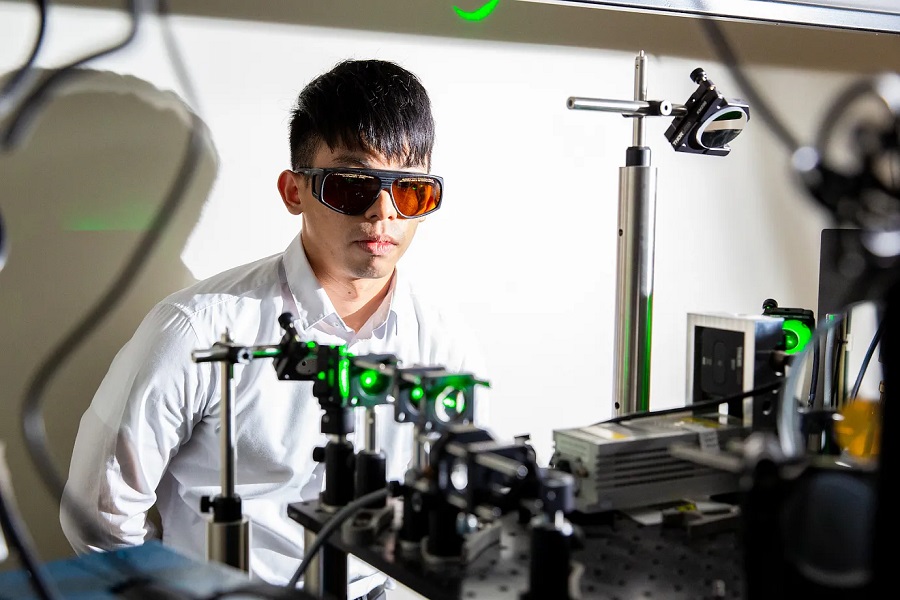How a thousand tiny lasers could launch a dynamic hologram

Physicists have developed a new tiny laser that could be used by the thousand to make future dynamic 3D holograms.
Unlike a 2D screen made up of coloured dots, each pixel in a hologram would need to be a microscopic laser with precise control of the light it emits, and that consumes minimal power: until now such a device had not been created.
The new laser, made from a ring laser surrounding a nanowire, could be employed in many future holographic technologies, such as medical imaging, said Wei Wen Wong, lead author of the team’s publication in Laser and Photonics Reviews.
“It is our hope that this novel device will one day be integrated into a device small and cheap enough for medical professionals slip into their pocket as they travel to remote areas, allowing full colour dynamic holograms to be projected from field operating tables,” said Mr Wong, who recently completed a PhD in the Department of Electronic Materials Engineering and TMOS.
“This new development removes one of the key obstacles to realising 3D holograms. We are on the way to low power-consumption, on-chip microlasers with tunable emission directionality.”
Dynamic holograms are predicted to shorten operation times and deliver better surgical outcomes. They have the potential to replace current 2D imaging such as MRI scans, and give surgeons a more comprehensive understanding of a patient’s internal systems in real time. The result would be less invasive surgeries and fewer surprises on the operating table.
While the potential impact of 3D holograms in the medical sphere has been known for some time, technological solutions to date have been bulky, non-portable and expensive systems that can only be used in large, established hospitals, creating a significant barrier to widespread adoption.
The ANU/TMOS team came up with the new device by coupling two devices together, each with an ingredient essential to the success of the technology.
Lasers made from a nanowire – a tiny pillar of semiconductor material standing on a substrate – have been in existence for a decade and allow good control of their output direction and power, but suffer from energy leakage into the substrate.
To address this, the team built a ring laser around the nanowire, which was effective in trapping the light energy efficiently, despite the poor control over emission direction that ring lasers have, said Mr Wong.
“People have tried many other ways to improve the directionality of ring lasers, but most of the methods either deform or modify the shape of the ring cavity, which usually degrades its performance,” he said.
“We used both types of nanolasers to get the best combination. A micro-ring laser as the photon source, and a nanowire as the directional antenna.”
The team used the recent crystal deposition technology called selective area epitaxy technique to build the device.
At a mere 5 microns across, the device has great potential as a building block for dynamic holograms, said Professor Hoe Tan, TMOS Chief Investigator and ANU Physicist.
“The next step for our research is to create an array of pixels where the wavefront and beam shape can be controlled individually and dynamically tuned.”
This article first appeared at ANU Research School of Physics.
